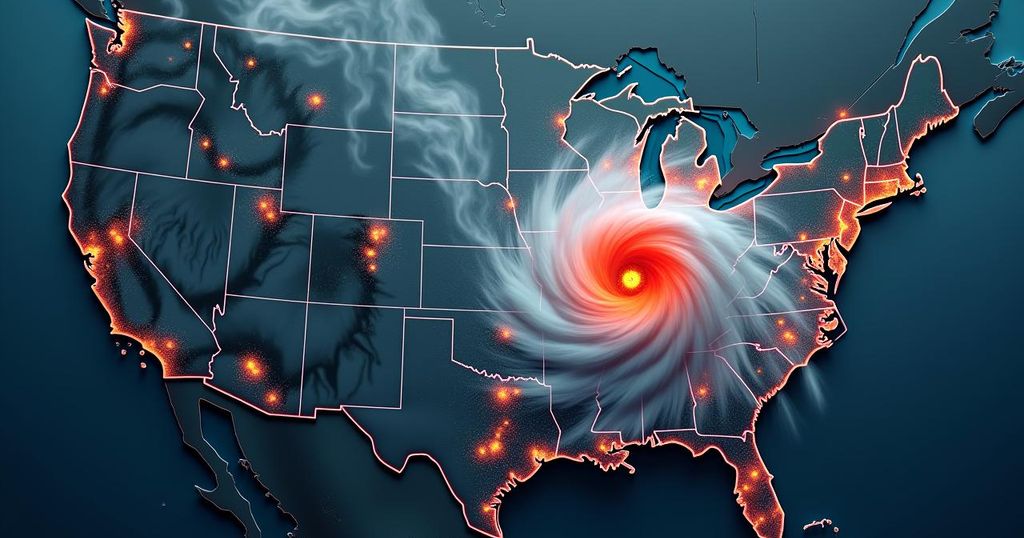Hurricane Helene: Catastrophic Impacts and Recovery Challenges

Hurricane Helene has become the second-deadliest hurricane in the United States in the last 50 years, with estimated damages ranging from $225 billion to $250 billion. The storm resulted in 213 confirmed fatalities and caused widespread destruction across the Southeastern U.S., including unprecedented rainfall and significant power outages affecting millions. Recovery efforts continue, with a considerable deployment of National Guard resources.
Hurricane Helene has emerged as the second-deadliest hurricane to impact the continental United States in half a century, with total damages estimated to reach between $225 billion and $250 billion. This catastrophic storm, which struck the Florida coastline approximately a week ago, inflicted unprecedented destruction across the Southeastern region, revealing a grim landscape of devastation as the full extent of its impact becomes evident. The storm unleashed an astonishing 42 trillion gallons of rain, sufficient to fill Lake Tahoe, resulting in record-breaking flood levels across several states. Tragically, the death toll currently stands at 213, positioning Helene behind only Hurricane Katrina and surpassing the fatalities inflicted by Hurricane Camille in 1969. Further complicating recovery efforts are prolonged power outages which left 4.8 million customers without electricity at one point following landfall, marking it as the most destructive storm in Georgia’s history. Infrastructure assessments reveal an urgent need for repairs, with thousands of power poles and miles of wire damaged or destroyed. In total, 5,785 members of the National Guard have been deployed to assist in the recovery efforts, which are further hindered by the emergencies declared across various states.
The toll of Hurricane Helene underscores the growing severity of natural disasters impacting the United States, revealing vulnerabilities in infrastructure and emergency response capabilities. Hurricanes have historically wreaked havoc in this region, with their intensity and frequency appearing to exacerbate in recent years. This trend raises critical questions regarding climate change and its implications for future storms, necessitating discussions on preparedness, infrastructure resilience, and long-term recovery strategies. The financial repercussions of Helene will likely challenge local and state economies for years to come, especially in sectors such as tourism and agriculture that are vital to the Southeastern U.S. Furthermore, the challenges posed by such storms are compounded by socioeconomic factors that often leave certain communities disproportionately affected.
In summary, Hurricane Helene’s devastating impact has etched its place in history as one of the deadliest in recent memory. As recovery efforts progress, the far-reaching consequences of the storm will be felt across various sectors, highlighting the urgent need for improved disaster preparedness and infrastructure resilience. With damage estimates soaring and lives lost, the response to Helene will shape future strategies to mitigate the effects of hurricanes in a changing climate.
Original Source: www.accuweather.com






